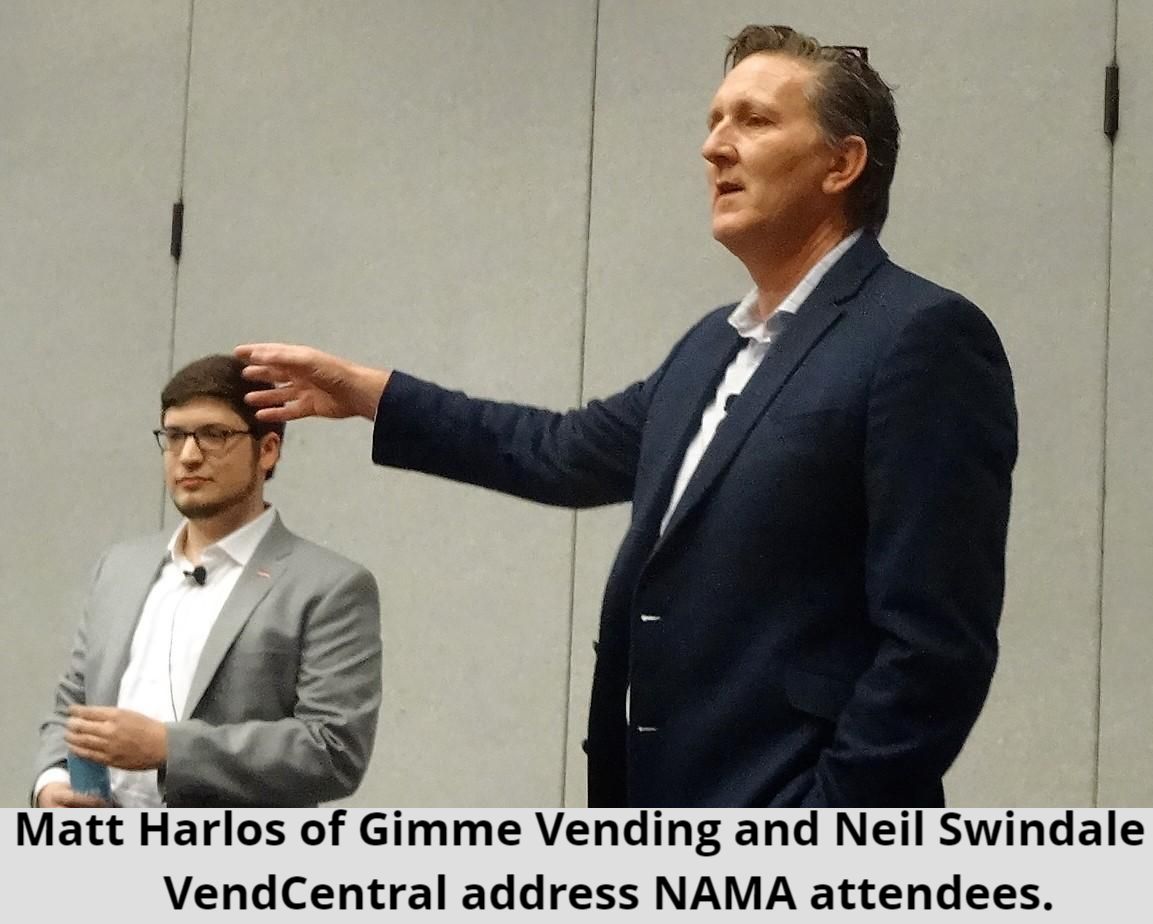How To Use Digital Media To Market Convenience Services: The Experts Weigh In
 Digital media has created a wealth of marketing opportunities for convenience service operators. Neil Swindale, owner of VendCentral, a website designer who has focused on convenience services, offered an overview on digital marketing during the National Automatic Merchandising Association show in Las Vegas. Joining him on stage was Matt Harlos, director of marketing at Gimme Vending, a vending management software provider.
Digital media has created a wealth of marketing opportunities for convenience service operators. Neil Swindale, owner of VendCentral, a website designer who has focused on convenience services, offered an overview on digital marketing during the National Automatic Merchandising Association show in Las Vegas. Joining him on stage was Matt Harlos, director of marketing at Gimme Vending, a vending management software provider.
Swindale focused a lot of his comments on social media. He stressed the importance of having employees contribute content to the company’s social media sites. Everyone today has a cell phone, he said, and most cell phones have cameras capable of taking good pictures that can be posted on social media.
Both speakers noted the importance of updating the website continuously. Swindale said today’s customers are basing a lot of their decisions on what they find on companies’ websites. Most buying decisions are made in two or three minutes after visiting a website, he said; female buyers decide in one minute.
Because of this, there is no place for poor quality pictures on a website, he said. “They’re researching you when you don’t know it,” he said. In designing operator websites, Swindale said he tries to position the companies as breakroom consultants.
“The number one thing is ‘go higher,’” Swindale said. “Put everything out there of what you’re capable of.”
“Who you are visually matters a lot,” Harlos said. “Your website is the solar system, your brand is the sun.”
Swindale also described the importance of marketing to prospective customers using social media. When he visits his vending operator customers, he makes it a point to take a picture of himself with the customer, then post it on LinkedIn.
He gave an example of how he has used social media to gain customers. When he noticed that David Marler, vice president of sales and marketing at LightSpeed Automation was following him on LinkedIn, Swindale posted a picture of a LightSpeed Automation system with one of his own operator customers along with a comment. Marler saw the post and invited Swindale to get in touch. This resulted in Swindale being invited to LightSpeed Automation’s user conference, which exposed him to more prospective customers.
“A two-minute post resulted in a sale for me that was quite significant,” Swindale said.
Swindale has also posted “before and after” pictures of breakroom transitions on social media, which is something convenience service operators can do.
While all the social media sites are good marketing tools, Swindale views LinkedIn as the best. He encouraged operators to share generic information on LinkedIn about their services as well as direct messaging prospective customers, but not to overdo it. Personal posts get more attention than general posts, Swindale added.
Harlos agreed, noting that the goal of messaging on LinkedIn is not to make a sale, but to create awareness.
In addition to social media marketing, email marketing is an important tool for operators. The speakers agreed that email messages through services such as Mailchimp need to be informative and entertaining, with the recipient’s needs in mind, such as healthy products and attentive customer service. The content of email messages can be more extensive than social media posts, Swindale said.
As with social media posts, it is important not to be too aggressive with email marketing. “You don’t want to spam people with email marketing,” Harlos said.
Convenience service operators also need to be aware of search engine optimization, the speakers agreed. They need to consider the words prospective customers use when they search for services on Internet search engines.
Search engine listings are another reason that website pictures should be high quality and periodically refreshed, Swindale said.
Operators should also make efforts to get their customers to write positive reviews that can be posted on their websites and on social media posts, Swindale said.
Tracking website traffic is also important. Swindale said Google Analytics is a great tool for companies to use to know who is visiting their website. The tool will indicate what social media channel, if any, drove the visitor to the company’s website. This will allow the company to know what social media channels to focus their marketing efforts on.
By Jeff Adair, Editor
![]() Vending Technology News | More News | Vending Newsletter sign up | Questions? Contact us | email press release
Vending Technology News | More News | Vending Newsletter sign up | Questions? Contact us | email press release
Also see: Software Companies | Technology Companies | Micro Markets | Cashless Vending | Distributors | Classified Ads | Routes for sale | Vending Companies USA | Home |
VENDING YELLOW PAGES DIRECTORIES:
Call us at 1-800-956-8363, POST YOUR COMPANY, GET NEW BUSINESS!




